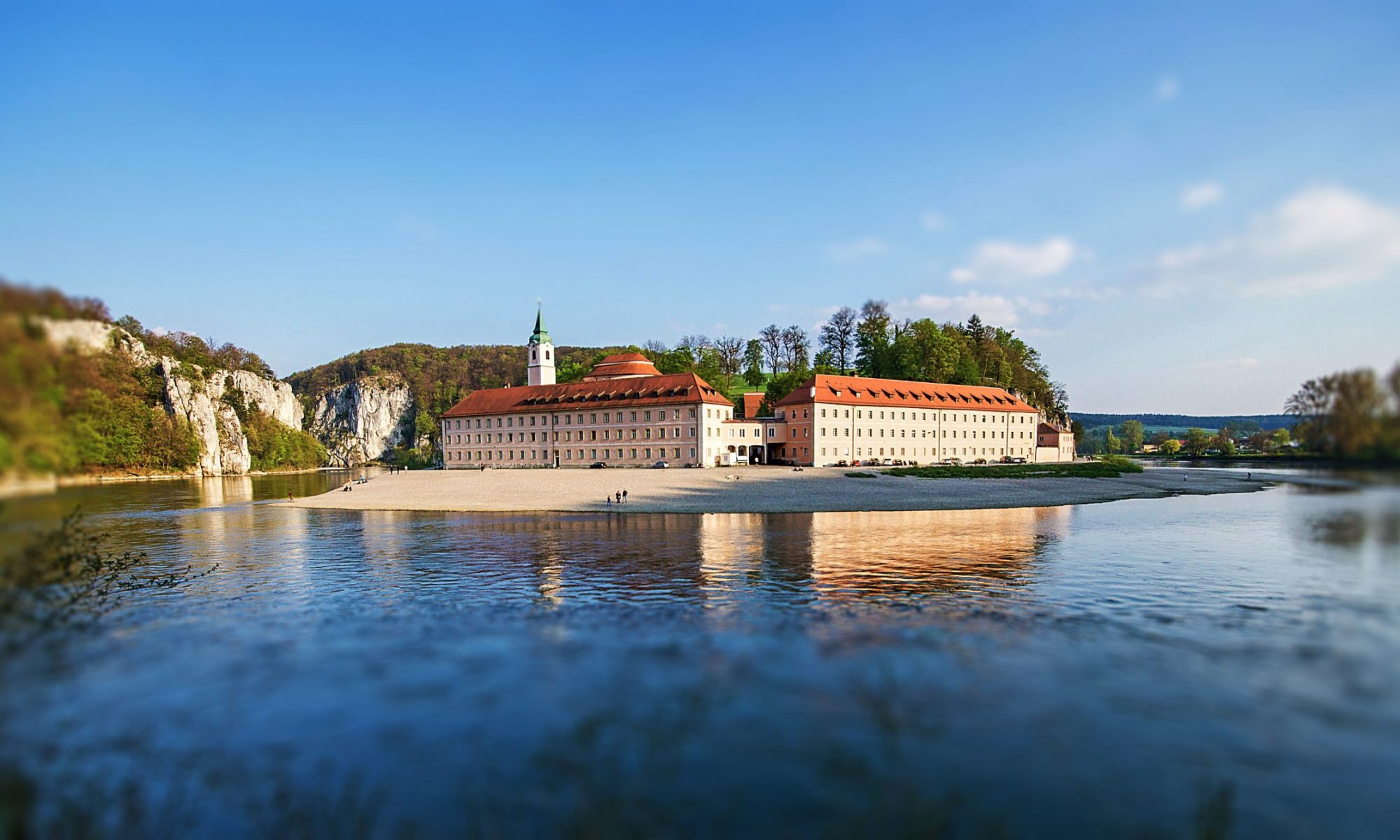With its combination of fresco, limewash and secco techniques, the strongly lit painting of the inner dome presents a harmony of blue, gold-ochre and red that is best seen in perspective from the western focus of the church’s main ellipse. Oddly, the somewhat independent temple rotunda (a so-called monopteros) which unifies the painting’s composition does not present the type of illusionistic continuation of the church’s architectural language which is so typical of Baroque art. The base of this circle of columns remains hidden, and so seems to be weightless. Mediating between the subdued light of the real space below and the light-filled heavens above is a frame-like wooden corona held up by angels around the rim of the outer dome – a symbolic representation of the crown of life that awaits the faithful at Heaven’s Gate. And peering over the southern edge of this corona, we find the smiling bust of Cosmas Damian Asam (created by his brother), with the signature obliquely behind him (dated 1721) identifying him as the creator of the ceiling frescoes and architect of the church.
The massed figures populating the dome represent the congregation of saints assembled before the cloud-borne throne of God. Above the personification of the church triumphant which crowns the sanctuary arch, they are arranged in hierarchical order from the victorious figure of St. George (transposed, as it were, from the high altar) to the Blessed Virgin, humbly awaiting her coronation, to the Holy Trinity itself, which forms the centre of the scene. At the northern edge of the fresco, the apostles are led by St. Peter; with St. Rupert taking his place among them as the apostle of the Bavarians, to which he is said to have brought the miraculous Madonnas of Altötting and Weltenburg (Frauenberg). Further on, the Archangel Gabriel foretells the birth of their son, John the Baptist, to the priest Zachary and his wife Elizabeth; the Holy Kindred is completed by the figures of Mary’s parents, Joachim and Anne, and her spouse, Joseph – all of whom belonged to the House of David. King David himself is portrayed next in concert with St. Cecilia, the patron of church music. Their proximity to the monks’ choir and the organ makes the reference of the paired figures unmistakable. A similar intentional reference is provided by the penitent Magdalen and the Angel of Judgment which provide a transition to the vestibule below.
Beginning again on the southern rim of the dome, one finds St. Peter, the foundation stone of the Church, standing opposite St. Benedict, the founder of the order and the Rule to which the abbey adheres, and his sister St. Scholastica. Under his protection, we find Abbot Maurus Bächl, the builder of Weltenburg, and the monks of this community. Between this group and the church’s second patron, St. Martin of Tours, stands a figure bearing the facial features of Egid Quirin Asam – close to the laughing stucco bust of his brother. This panoply of figures is completed by St. Wolfgang, one of the patrons of the diocese of Regensburg, the sibling saints Placidus und Flavia (all members of the Benedictine Order), and finally by a dense throng of jubilant female saints, among them the saints Helena, Ursula, Barbara, and Catherine.


